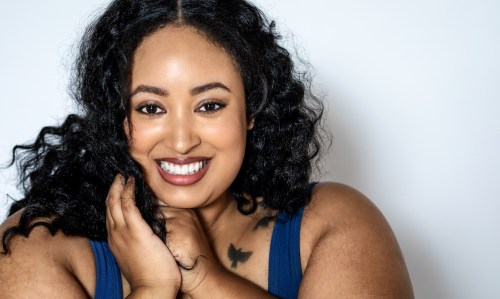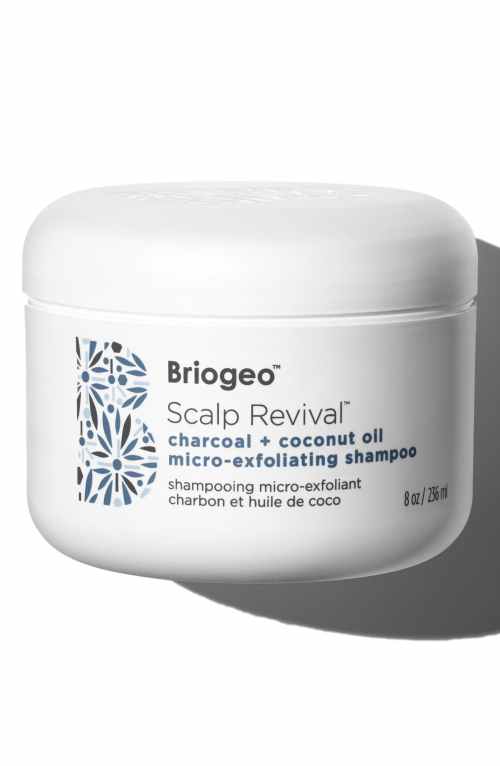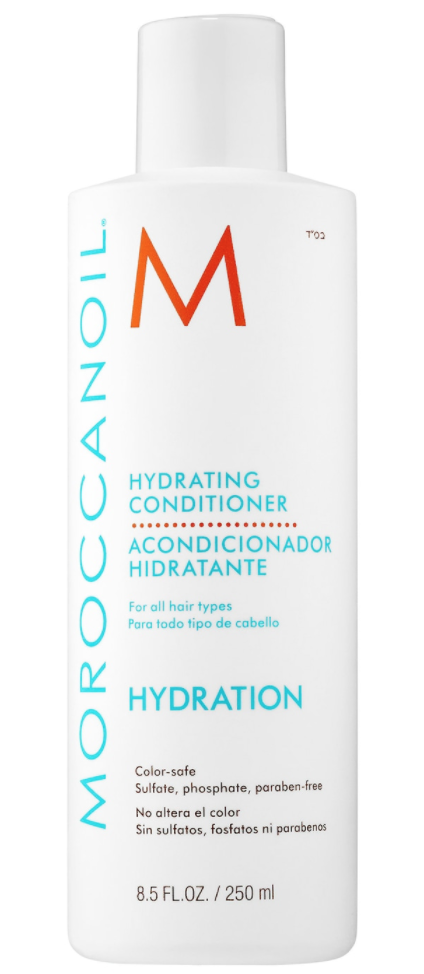Our editors independently select these products. Making a purchase through our links may earn Well+Good a commission
If You’ve Got a Greasy Scalp and Dry Strands, a Celebrity Stylist Says ‘Combination Hair’ May Be To Blame
If you're dealing with a greasy scalp and dry strands, celebrity stylist Mark Townsend says 'Combination hair' is likely to blame.

You’ve heard of combination skin, but have you heard of combination hair? Even if you’re unfamiliar with the terminology, perhaps you can relate to the phenomenon it describes: thirsty, flailed ends stemming from an oily, greasy scalp. An apparent paradox, yes—but one that’s actually quite common.
Experts in This Article
co-founder and chief science officer at hair-care brand Function of Beauty
celebrity hair stylist
According to celebrity stylist Mark Townsend, combination hair is definitely a thing—even among some of his clients (celebs—they’re just like us!). Greasy roots and dry ends can happen simultaneously, usually because you aren’t taking extra care to avoid one or the other. When it comes to dealing with this type of hair, the “Goldilocks principle” applies, meaning you need to find a routine that’s just right for keeping both your scalp and strands properly nourished.
Reminder: “Our scalps are skin,” says Townsend. Ergo, the scalp has pores; it’s also capable of producing oils, sweating, and becoming generally out of whack in the same way your facial skin can. It is crucial to view the scalp as the skin that it is to understand why it may become oily, even when the rest of your hair feels dry.
On the flip side, poorly hydrated strands can lead to all sorts of issues—namely dullness and frizz. “When your hair is dry, damaged, or chemically treated, the outer layer of the strand—otherwise known as the cuticle—becomes raised, as opposed to laying flat and smooth, allowing moisture from the surrounding air to enter, causing it to swell and turn into frizz,” Hien Kaplan, co-founder and chief science officer at Function of Beauty, previously told Well+Good.
Below, Townsend explains the biggest causes behind both ends of the combination hair spectrum—which commonly exist in tandem—and what you need to do to combat each scenario.
Oily scalp causes
1. Temperature fluctuations
In many areas of the country, this time of year is rife with temperamental temperatures that seem to dip and soar on a whim. Aside from the general annoyance factor, inter-seasonal temp shifts can have implications for your skin—including the skin on your head. In fact, Townsend calls temperature extremes “one of the biggest causes of combo hair.” Many of us find ourselves with sweaty heads, and when sweat is left on the skin it can lead to clogged pores, as well as a greasier-feeling scalp overall.
2. Overexfoliation
“The other biggest cause of combination hair is over-exfoliation of the scalp,” says Townsend, who points to the popularity of scalp scrubs in recent years trend as a contributing factor.
On one hand, “exfoliation is so important because you want those pores to be nice and open and clean—so your hair follicles can actually grow out healthy hair,” he says. But on the other, too much of a good thing can strip your scalp of its natural lipids and oils—which are what Townsend calls “nature’s conditioner.”
He explains that a lipid-stripped scalp may overcompensate by churning out extra sebum, leaving oily-looking roots in its wake. Excess oil and pore-clogging lipids can also lead to scalp acne and blocked hair follicles. For this reason, Townsend likens a scalp exfoliation session to a facial exfoliation session: necessary, but only in moderation.
Not to mention, over-exfoliating any skin—be it scalp skin, face skin, or otherwise—can weaken the all-important skin barrier. This comes with a host of issues, including transepidermal water loss and, consequently, dryness and irritation. The fix? Finding balance is key, says Townsend. “Making sure you have a clean scalp, but not over-exfoliating.” For Townsend, this means treating yourself to a nice, gentle scrub every two or three weeks.

Briogeo Scalp Revival Charcoal + Coconut Oil Micro-exfoliating Scalp Scrub Shampoo — $42.00
3. Too-frequent washes
As with too much exfoliation, there is also such a thing as too much cleansing. If you’re someone who shampoos every single day, you might be “over-stripping your natural oils,” says Townsend. In doing so, your scalp may “go into overdrive to create more oils.”
Too much oil equals oily-looking root—which, more often than not, leads to shampooing more frequently in order to keep that oiliness at bay. “It’s a horrible cycle that you have to break!” he says.
So, how does one break the cycle? If you’re an everyday shampooer, try cutting back to every other day. On your in-between days wet your scalp and give it a nice massage—“Like you would if you had shampoo in there—without actually using shampoo,” says Townsend.
As for so-called “detox” shampoos? Feel free to whip out a grime-busting formula every few cleansing sessions, particularly if you use a lot of mousse or hair gel. For a gentle yet effective deep clean, consider hopping on the apple cider vinegar trend.

dpHUE Apple Cider Vinegar Hair Rinse — $35.00
Dry hair causes
1. Delaying your haircut
The ends of the hair, especially long hair, usually lack adequate nourishment to begin with due to their distance from the scalp. “The longer your hair gets, the more of the fatty acids and lipids that actually make up hair have been depleted,” says Townsend.
To combat this, a trim is a good place to start, particularly if you’ve not been to the salon in a few months (or years—no judgment). Townsend also suggests adding moisture back into the hair shaft, which can help ultra-dry ends look and feel more hydrated. To do so, look for hair-care products that feature skin-care-level ingredients—which, thanks to the recent “skin-ification” of hair, is easier than ever. Townsend suggests this shampoo from Dove, which contains moisture-locking hyaluronic acid.

Dove Hair Therapy Hydration Spa Shampoo — $9.00
2. Shampooing your strands
Even if you’re using the right products, it’s entirely possible that you’re washing your hair in a strand-sapping manner. According to Townsend, many people have a tendency to throw their hair, ends and all, onto the top of the head, ball it up, and create a sudsy mound of shampoo. The issue with this approach? Our hair strands—from midshaft to the ends—rarely need an actual shampooing.
“Most of the time, we really just need to cleanse our scalp,” says Townsend. “Not all the hair.” Shampooing the midlength and ends of your hair can rob them of natural lipids (recall “nature’s conditioner”), leaving them dry and scraggly.
While you want to keep your shampoo off of your mid-lengths and ends, you’ll want to be sure you’re focusing your conditioner in these spots, as this is the part of your routine that will introduce much-needed moisture. “Therefore, the more hydrated your hair is, the more the cuticle layer will lie flat, leaving you with smooth, flyaway-free strands,” says Nguyen. Look for formulas free of sulfates, as the ingredient may dry out your strands even further.

Moroccanoil Hydrating Conditioner — $26.00
3. Improper brushing
While many of us overlook our hair-brushing technique, paying attention could help combat combo hair. “Marcia Brady had it right,” says Townsend. “Brushing from the scalp, not from the air, gets those oils to move down the hair shaft instead of staying right there at the root.”
Consider consciously brushing—from your scalp all the way through your ends—before bed tonight. In addition to distributing “nature’s conditioner,” (there’s that oh-so-important phrase again) this method has the makings of a nighttime self-care ritual.

Denman Large Natural Bristle with Nylon Brush — $40.00
Want to try trimming your hair at home? Follow along with the tutorial below.
Want even more beauty intel from our editors? Follow our Fineprint Instagram account) for must-know tips and tricks.
Sign up for the Well+Good SHOP Newsletter
Get exclusive deals on wellness, beauty, fitness, and food products that have been hand-picked by our editors.
Got it, you've been added to our email list.










